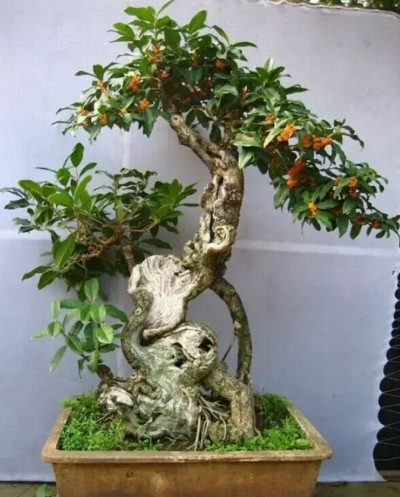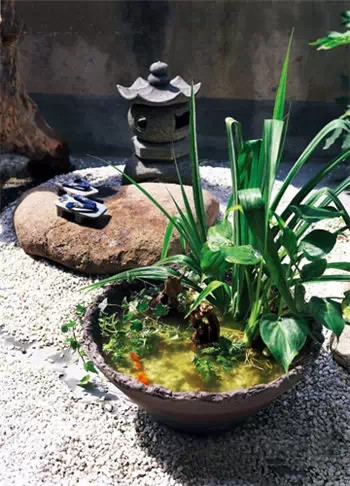Grafting method of Osmanthus fragrans Bonsai
Sweet-scented osmanthus is a good tree species for processing bonsai because of its luxuriant branches, evergreen seasons, intertwined roots, beautiful posture, gorgeous flowers and fruits, fragrant flowers, strong sprouting, pruning resistance, long life and other biological characteristics. The production process of sweet-scented osmanthus bonsai is complicated, learning from nature and wonderful. High-level bonsai benefits from the profound artistic conception and skilled techniques of bonsai teachers.

It is difficult to make large and medium-sized sweet-scented osmanthus bonsai, but small and medium-sized sweet-scented osmanthus bonsai can use lobular privet or ash as rootstock. Now the grafting method is briefly introduced as follows.
1. Material selection
When you choose privet as a rootstock, you should choose pile blanks that are graceful, robust, vigorous and suitable for making bonsai. After pile billet excavation, cut off the thick and long main root, retain the fibrous root, and in accordance with the requirements of bonsai production, retain the necessary branches, and the rest can be cut off and removed. Then, according to the growth of the billet, do the root treatment, and then use the pot as the rootstock after 1-2 years of maintenance. Excavation should be carried out in the first and middle of February before the sap flows in winter or spring.
2. Grafting
Osmanthus fragrans are generally made by grafting, but most of them rely on grafting and splitting. In Jiangsu area, it can be carried out from March to May, and the best time is pre-summer. Open-field maintenance seedlings are easy to survive, robust, generally about two months can survive. The splicing method is usually carried out in mid-late March, when lobular privet and sweet-scented osmanthus are about to sprout. After splicing, it was placed in a shaded shed to prevent the wind from losing water to death. The grafted leaflet privet stump will sprout new buds and tender leaves, which should be removed as soon as they are found. In the future, once it is found that the sprouting branches and tender leaves of rootstocks should be removed at any time, we should strictly prevent "noisy guests and seizing the master". Otherwise, the grafted branches of sweet-scented osmanthus not only will not grow, but will wither and die over a long period of time. After survival, you can hit the top in time and control the height.
Principles for making sweet-scented osmanthus bonsai
Far-reaching composition; learn from natural reality; enhance strengths and avoid weaknesses; dynamic and static combination of dexterity; unified coordination and eye-pleasing; small and medium-sized perception; proper density; clear primary and secondary eye-catching.
Time: 2019-05-26 Click:
- Prev

The production of sparrow plum bonsai
Sparrow plum, also known as thorn, sparrow plum vine, sour fruit, sour young tree, is a deciduous climbing shrub of the family Rhamnaceae. The bark is grayish brown and the branchlets are slender with needles. Leaves opposite, ovate or elliptic, margin serrulate, thinly leathery and bright green. Small yellowish flowers in autumn and winter, drupe nearly globose, purple-black when ripe, edible
- Next

The method of making bonsai in golden pond
Create a small ecological space for the little goldfish? Yes, there are plants on the top and goldfish on the bottom, which are harmonious and beneficial to each other, and can bring you a more natural sense of intimacy. Materials: new Zealand leaves, ivy, green apple, aquatic plants, roots, small goldfish production: when making, first put in white pebbles, and then bury the plants
Related
- Fuxing push coffee new agricultural production and marketing class: lack of small-scale processing plants
- Jujube rice field leisure farm deep ploughing Yilan for five years to create a space for organic food and play
- Nongyu Farm-A trial of organic papaya for brave women with advanced technology
- Four points for attention in the prevention and control of diseases and insect pests of edible fungi
- How to add nutrient solution to Edible Fungi
- Is there any good way to control edible fungus mites?
- Open Inoculation Technology of Edible Fungi
- Is there any clever way to use fertilizer for edible fungus in winter?
- What agents are used to kill the pathogens of edible fungi in the mushroom shed?
- Rapid drying of Edible Fungi

